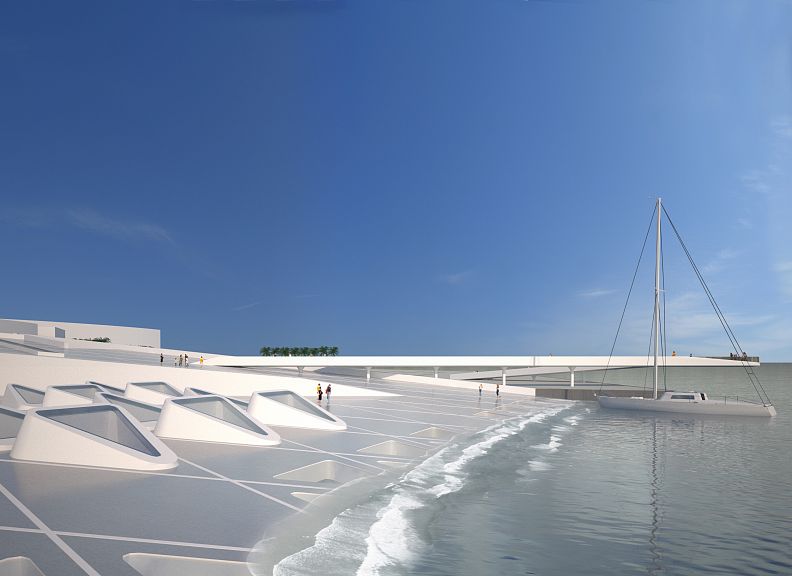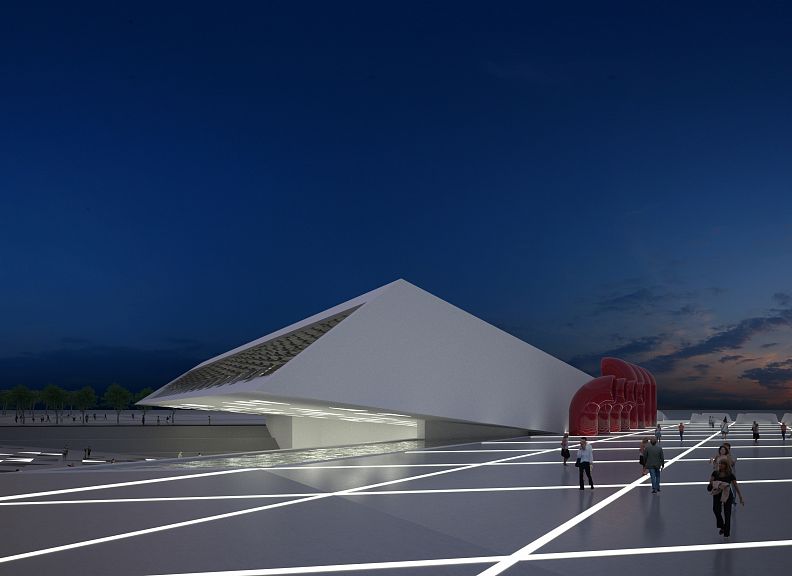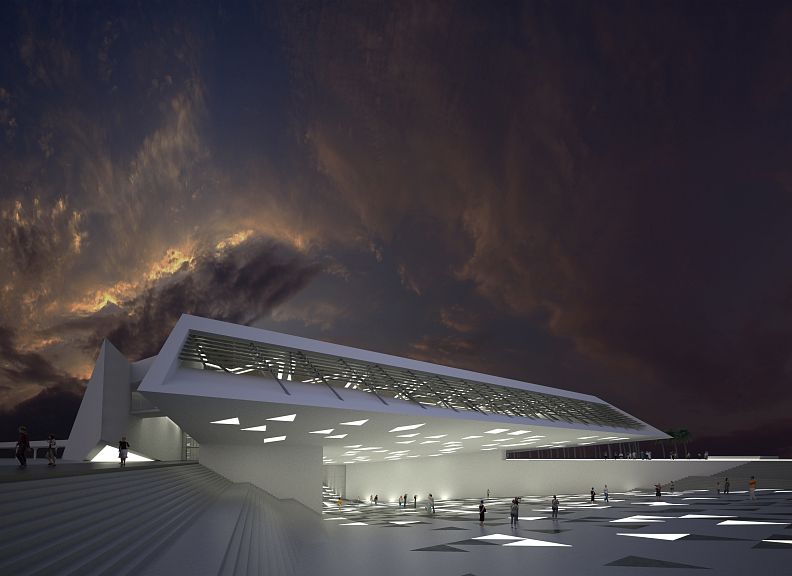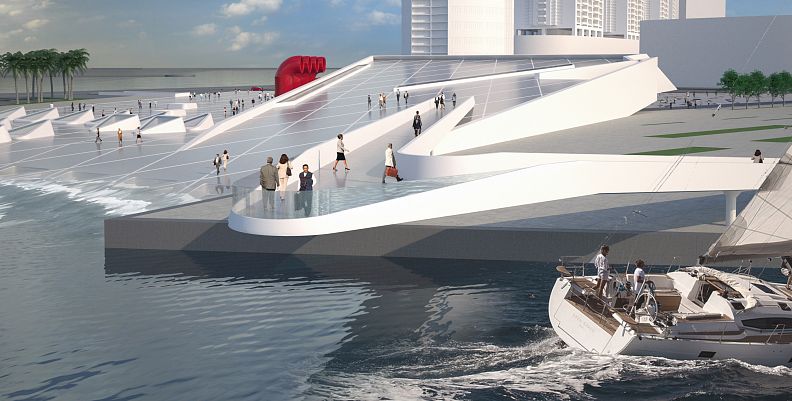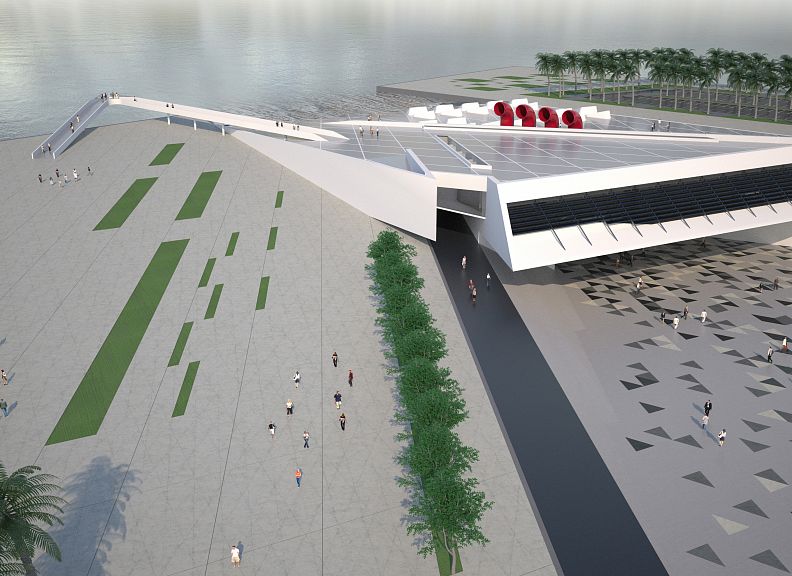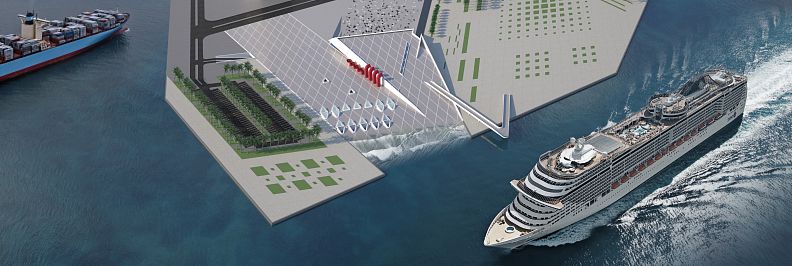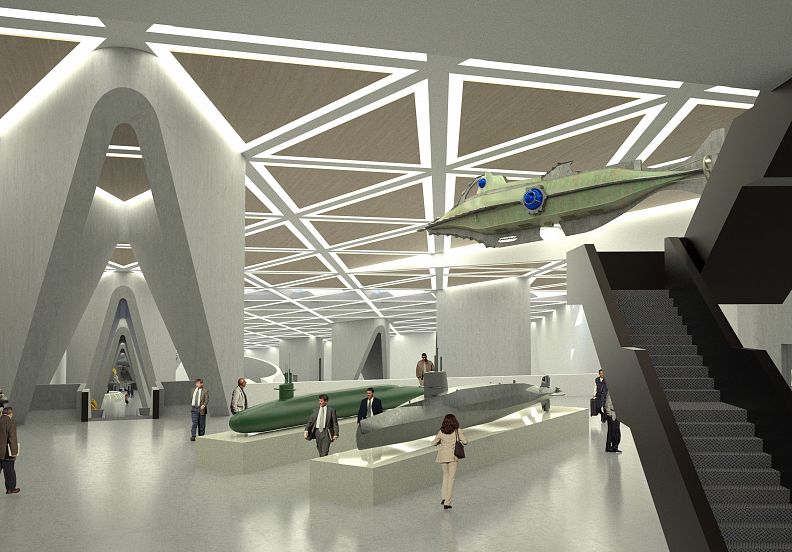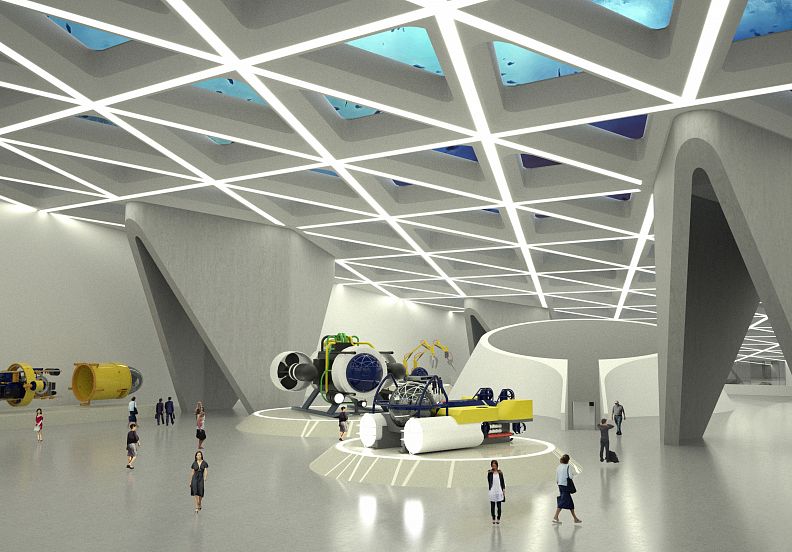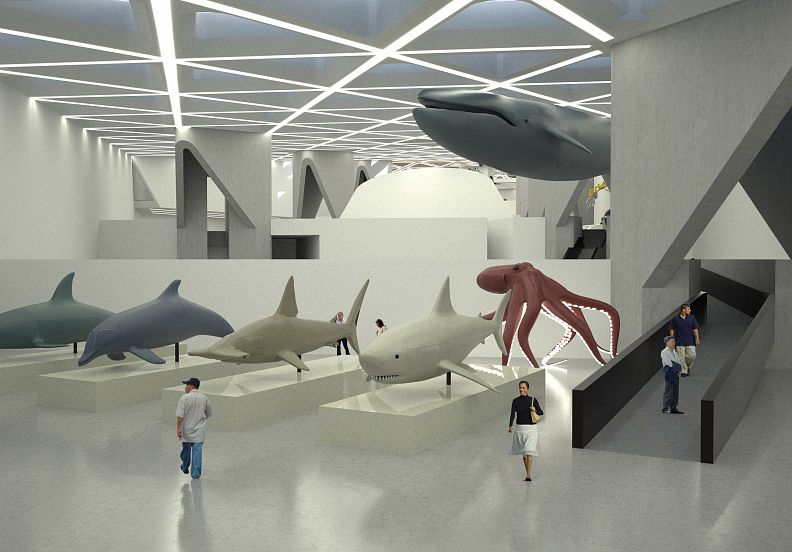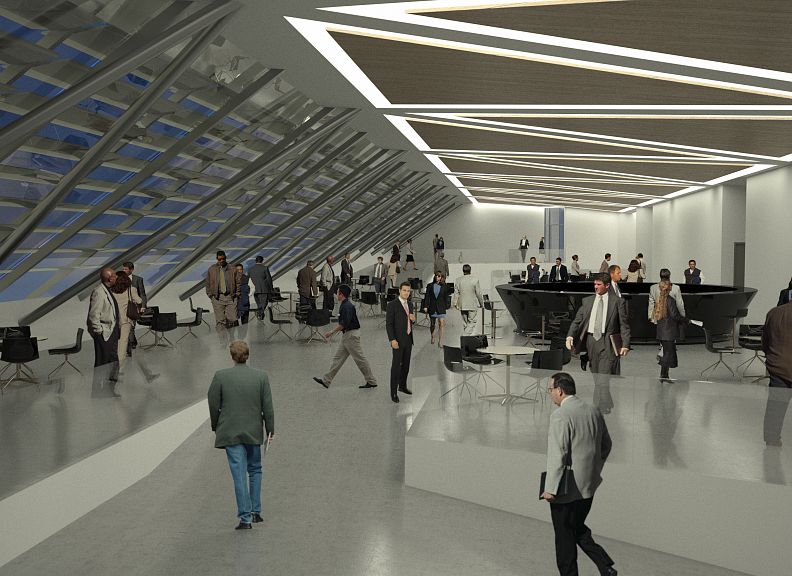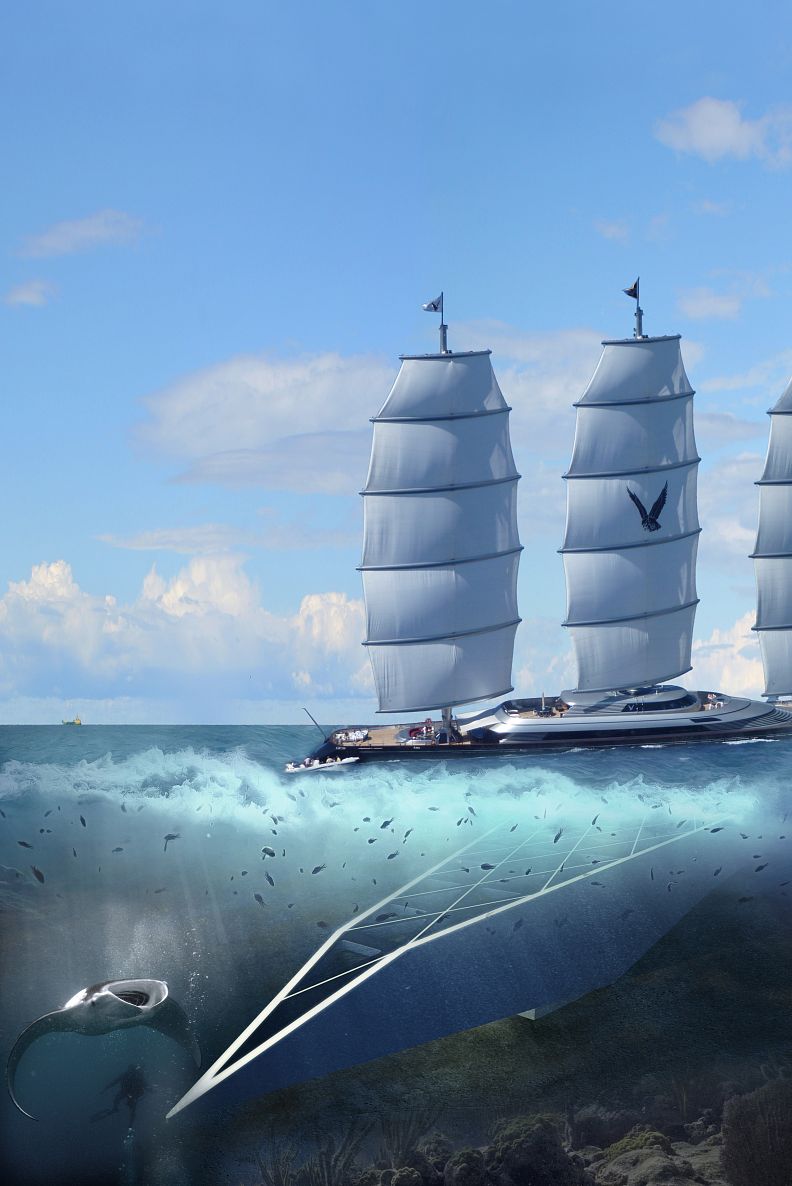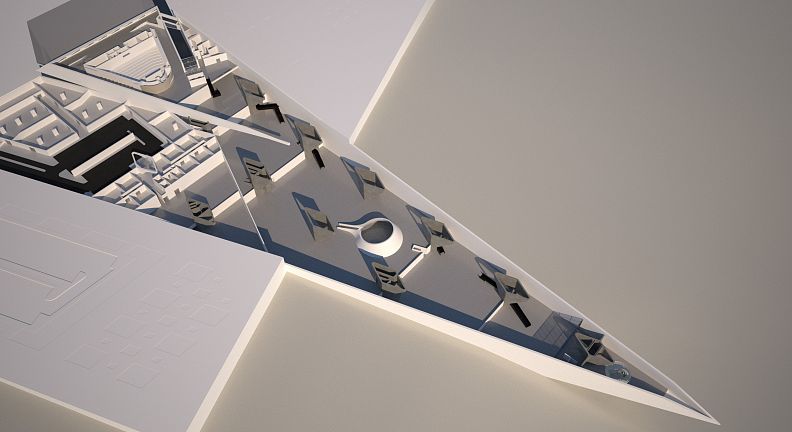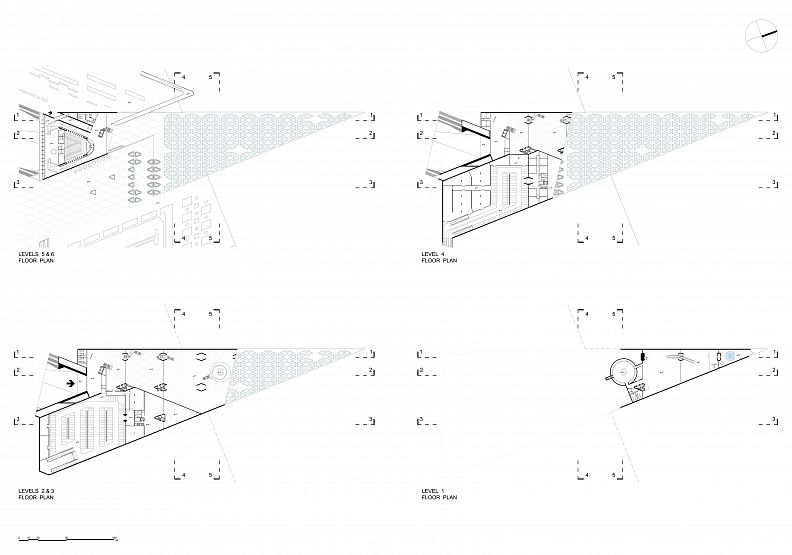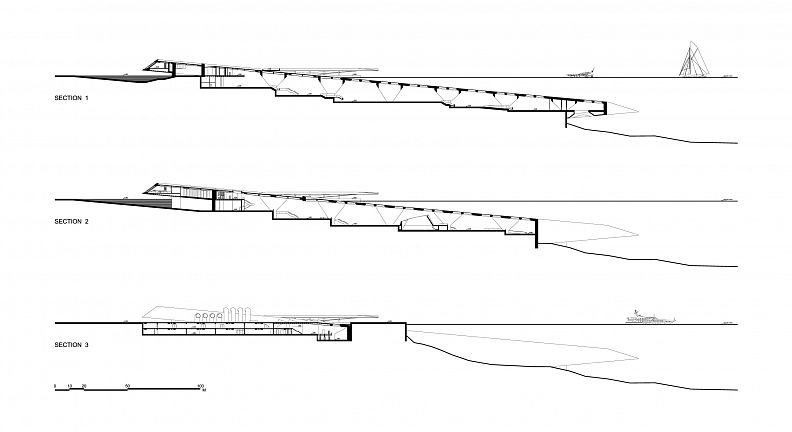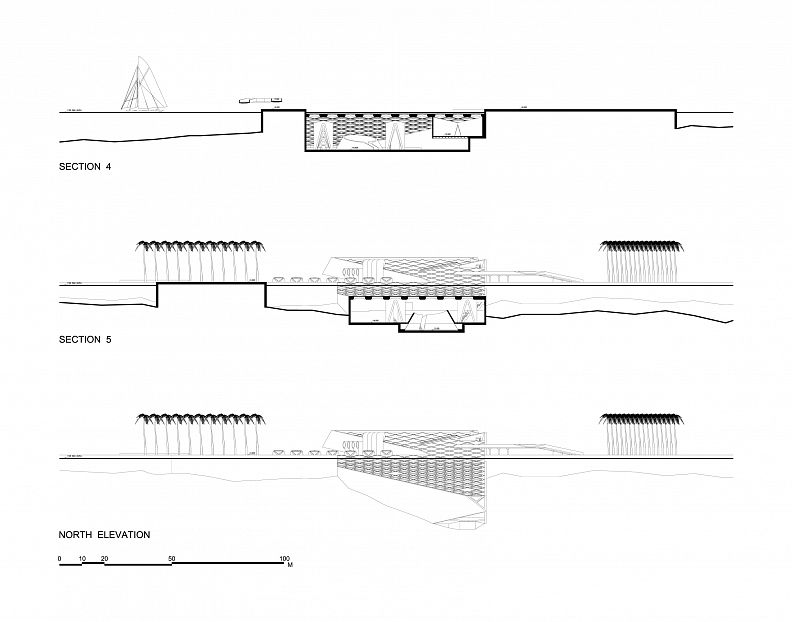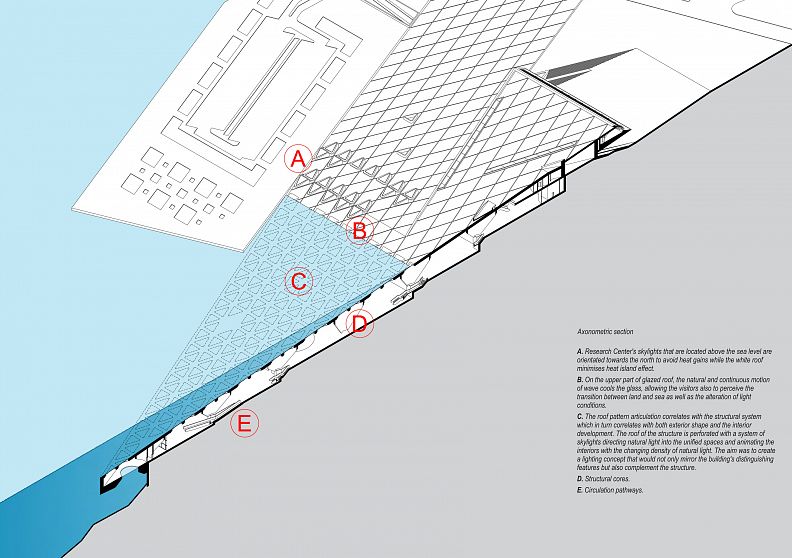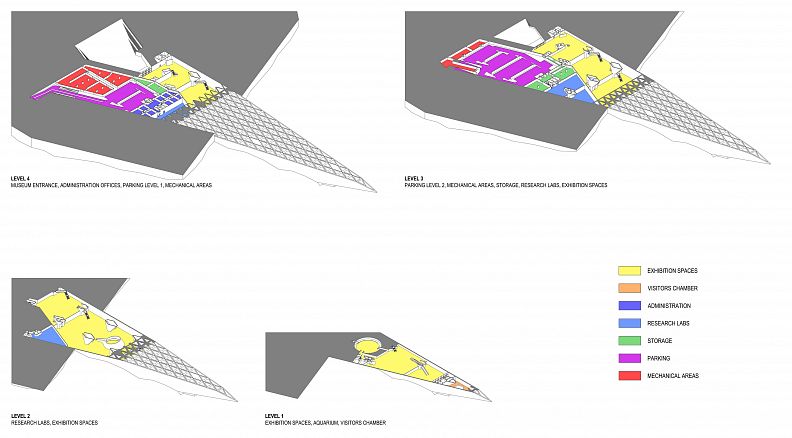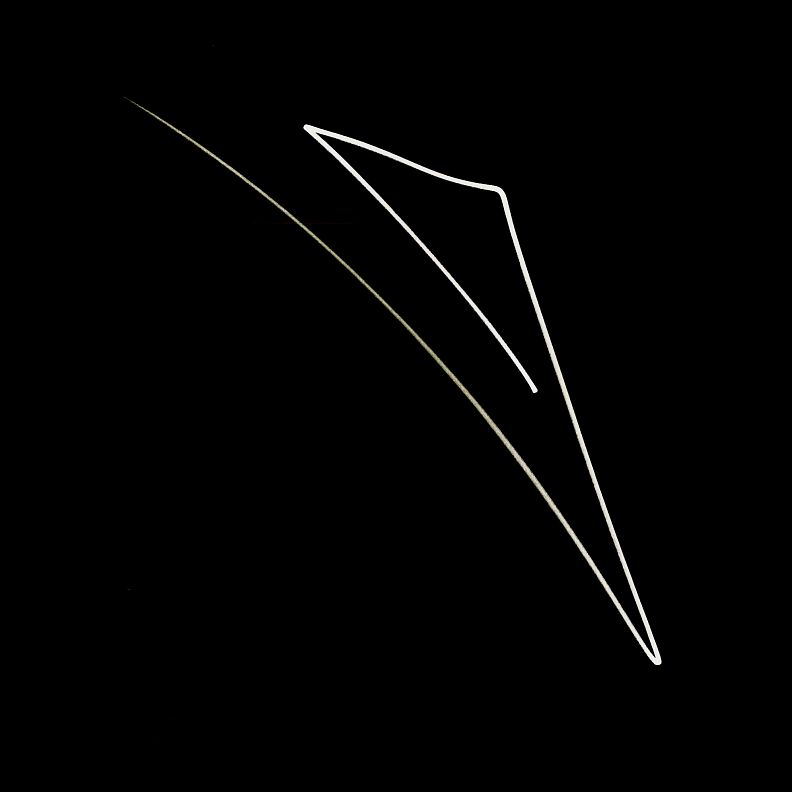Dubai Maritime Museum & Research Center

Idea projektu
Dubai has always been a city with a strong maritime heritage. The pearl diving industry for hundreds of years before the discovery of oil was the primary source of income for the people and the sea was the source of food and livelihood. The rapid growth of the rural and urban economy over the last decades in combination with the construction frenzy and the creation of massive waterfront developments have had a profound effect on Dubai’s aquatic ecosystem. Commercial and private real estate development in the United Arab Emirates today threatens whales, dugongs and all marine life in the Arabian Gulf.
Purpose of the Maritime Museum and Research Center is to present and protect the marine and cultural heritage of the UAE. The Museum – Research Center will provide the marine enthusiasts, environmentalists and tourists with a unique sustainably created sea-based attraction that will serve as an Eco-tourism hot spot.
This project asks for a greater recognition and awareness of the oceans and marine resources as well as their importance to mankind. Furthermore, it aspires to set an example at an international level on how marine development can be achieved in a sustainable manner which will promote and guarantee the evolution of a contemporary society with respect both to the planet and to its inhabitants. There is more to sustainability than just preserving species, we need to also preserve our relationships with them.
Popis projektu
Relating to both the sea and the city and in constant dialogue between them, the building is an extension of the city to the sea and vice-versa. Conceived as a continuation and a transition through the wide public space, the building dives into the ocean and merges with it. It develops as a triangular sharp form, which concentrates the public routes to the museum, through an inviting shape that draws visitors to the entrance and distributes them to the interior.
Concept follows the idea that buildings are not simply physical objects, but artifacts with meaning or signs dispersed across some larger social text. The museum itself is an artifact, an artificial underwater environment organized under an immense glass roof that has been designed in order to give the maximum view of the ocean and intensify the feeling of diving into the seabed. By optimizing the maritime-themed environment and combining it with breathtaking underwater views, the museum reflects in a sincere manner its function.
The building is simultaneously a vessel that supports the idea of the journey. Interior space is organised through cascading platforms that develop in a successive and continuous manner, allowing visitors to have a panoramic and clear overview of the whole museum’s interior, under a «water roof». The perforation of the ceiling reinforces the solemn atmosphere of the deep sea and the large windows offer a contemplative view of the ocean.
The higher part of the inclined form hosts the hanging auditorium and restaurant, which define the entrance and extend the plaza to the sky. Access to these areas is possible also through independent entrances from the 2 plaza levels in order for them to be able to function autonomously. The dynamic form of the building projecting from the ground towards the sky achieves additional spatial and programmatic organization, revealing its programmatic qualities into the surrounding topography. The programmatic requirements, orientation, and restrained material palette were thoroughly evaluated and considered in order to reduce the building’s energy use, ongoing maintenance and provide a sustainable outcome.
Interior Space
Generous internal height alows the perception of wide interior views and the display of artifacts of significant scale. The integration of expansive areas provides spatial connectivity throughout and enormous flexibility for the development of the programmatic requirements. Inside this wide space, collection is divided in entities such as marine life, marine technology, supervisory material, interactive educational and experimental exhibits, aquariums, video projections and digital representations as well as underwater photography exhibitions.
Presentation of the museum’s collection happens in a direct relation with the ocean’s setting, since the artificial manmade space is fully integrated into the natural underwater environment. The experience evokes a descent to the depths of the ocean. Natural light enters the building through the glass ceiling and as the building sinks, space narrows and the light’s intensity gradually reduces, detaching the building from the surface and making it part of the ocean. Concentrative form leads to a chamber at the deepest part of the museum, which alows visitors to experience the submergence through a travel around the museum with a submarine vessel.
Sustainability
It is worth emphasizing the different physical properties water provides compared with air. Briefly these properties are the higher thermal capacity as well as the phase difference of water temperature in relation to the air in different seasons. Also important is the difference in temperature of surface waters in relation to deep-water layers or currents. Since sea water temperature is always lower than the ambient temperature, placement of the building underwater alows to minimize energy strain on the mechanical systems used for cooling. Water functions as a temperature buffer for the building, while at the same time simulates the ocean's role as a regulator of the world climate.
On the upper part of glazed roof, the natural and continuous motion of wave cools the glass, allowing the visitors also to perceive the transition between land and sea as well as the alteration of light conditions. Research Center’s skylights that are located above the sea level are orientated towards the north to avoid heat gains and establish stable light conditions for the research labs below, while the white roof minimises heat island effect.
Systems and circulation
Required distribution of MEP services happens through the cores which also embody the main function of internal circulation. Circulation network is further organized by the pathways of staircases, ramps and lifts that act as connection points between the different levels and guide the visitors through the exhibition levels. People’s flow inside the building follows a specific pattern in a way that the circulation of public itself is intended to act as experiential content. The result is a deep relationality and interconnection of spaces that can help achieve an atmosphere of total continuity, like the vast environment of sea.
The DMMRC currently undergoes the detailed design phase and has been already honored with the following International Awards:
- AIA Middle East Design Awards
- Iconic Award
- Spark International Award
- American Architecture Prize
- German Design Award
- International Design Award
- RTF Sustainability Award
- A’ Design Award
Video link:
https://youtu.be/vu74Ce6Ng8o
Technické informace
Underwater construction
The most challenging aspect of the building’s construction is the underwater portion. In order to create dry and water free environment and since the depth is considerable, the construction sequence will involve the erection of cofferdams for the portion built within water.
A pair of cofferdams following the outline of the volume will create a watertight retaining structure to enclose the submerged area of building that is roughly 4.500sm. The two sides formed by interlocking steel sheets and sheet piling are to be braced by truss arrangement of struts in order to increase the stability of walls against water pressure. The sheet piles have to be driven to a good depth in the bed since the temporary structure will have to withstand the hydrostatic force but also the dynamic force of waves.
Water will be pumped out in order to create a dry work environment and for the full duration of construction and until the dismantling of coffers, dewatering wells will be installed on the bed for the excavation and compaction to take place. The foundation will consist of a friction piles system and a raft foundation at the top of them that will serve as a pile cap. Reinforced concrete foundation piles are to be driven deep into sand and embedded in the weak rock layer beneath, following the concept of skin–friction. The completion of the soil investigation report and the structural design will define the exact number, size and depth of piles as well as the thickness of the concrete plug slab laid on top of them. A critical aspect of the design is the protection system against the marine environment. A surface layer of large rocks will surround the building’s base inside water in order to protect the foundation from erosion and impact of low currents.
Structural system
The main design challenge has been the construction of a vast underwater exhibition room. For this reason, special attention has been given to the design of the volume. The triangular shape minimizes the submerged portion of the building, with the underwater area being approximately 1/3 of the floor plan.
A unique aspect of the particular design is the visual and physical continuity. With generous open floor plates and large spans, the main exhibition space consists of spaces flexible for any type or size of exhibition. The curators and exhibition designers will have the freedom and ease to fit different kinds of exhibits into this space in a variety of ways and with ease of rearrangement.
The building’s main structural system consists of its continuous load-bearing shell and the diamond shaped concrete cores. The longitudinal external walls are load bearing with a thickness of up to 1m and on the top part they embrace the cantilever auditorium that is supported in concealed side pylons. Overall organization follows a triangular structural grid, which organizes the roof cells supported by the 12 structural cores. The volume requires these cores as a serious transfer structure to achieve the necessary clear spans in order to obtain large-scale column-free spaces that allow the visitor to experience the fluidity of the interior.
The cores and most of concrete structure will be site cast. For the majority of the building’s structural system it has been chosen reinforced Self-Compacting Concrete. Due to the complex design of the exposed concrete cores, a lot of rebar is anticipated inside them leaving very small spacing between bars. This structure would be extremely hard for normal concrete to flow through, because there is high probability of coarse aggregate getting trapped between rebars, leaving pockets and bubbles. The inversely angled shape of the cores would also be hard to vibrate.
SCC reduces the segregation between mortar and aggregate further strengthening the concrete because the particles and substance in the mix are evenly distributed. In this way it makes the structure strong through its form, rather than having one section harder than the rest. Another advantage of self-compacting concrete is that it can reduce significantly labor costs since it requires less workmanship. Self-compacting concrete can be poured 80% faster than normal concrete, mainly because of its physical property of being more fluid and this is very important for the acceleration of the submerged construction part.
Roof design
The diamond shaped cores are the main components that the steel roof truss spans from and carry most of the roof dead load but also the load of water above. The roof steel structure truss is clad with metal sheets that embody also the electrical and firefighting network. For the part of the roof that is above water, a waffle concrete slab in the same triangular pattern was adopted. The triangular pattern organizes a denser structure so that the uniform ceiling grid can achieve the long spans.
The roof truss system spans the whole unified interior with no intermediary supports, except the main cores which are positioned in line with the structural steel network of the roof in order to support the glass cells. These are made of Polymethyl methacrylate sheets (PMMA) chosen for their high resistance of pressure and strong shock resistance. The exterior surface of the glass panels has been designed with the introduction of curvature in a low dome formation that will allow transferring significant part of the load to the structural truss encasement, instead of the glass pane itself.
Another challenge has been the incorporation of mechanical systems. In order to free the roof from bulky mechanical equipment and ducting, in the submerged portion of the building the ventilation network runs below the floor. A tower duct system arises from the floor in the form of air posts to provide air conditioning into the concourse space.
Natural and artificial lighting concept
The roof pattern articulation correlates with the structural system which in turn correlates with both exterior shape and the interior development. The roof of the structure is perforated with a system of skylights directing natural light into the unified spaces and animating the interiors with the changing density of natural light.
The aim was to create a lighting concept that would not only mirror the building’s distinguishing features but also complement the structure. On the interior, the ceiling structural grid is underlined by the pattern of translucent stretched ceiling strips that will provide diffused light above the exhibits in a uniform manner.
On the exterior, the floor grid organizes the light patterns of pubic space, by spreading its fragments in the landscape, creating the visitors pathways and defining recreation areas that have unobstructed view to the ocean. These lighting formations are materialized with the help of side glow fiber optics and enliven the landscaped area. The lighting grid extends out in the surrounding sea, sinking and illuminating as it fades under the water.
The grid dissolves towards the city creating triangualr marble geometric patterns on the concrete floor, which concentrate towards the entrance. These collect the public routes to the museum through an inviting shape that draws visitors to the entrance and distributes them to the interior. Embeded lights under the marble floor patterns act as strong signalization elements when illuminating at night, creating a uniquely close bond between the city and the building, in the form of urban landscape.
On the deepest part of the sunken volume, a «light ring» signalizes the entry point of the submarine that alows visitors to travel around the museum with a submarine vessel.
